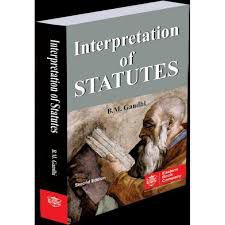Persecuted refugee and the Citizenship Amendment Act, 2019
CAA is about giving citizenship to persecuted refugees & not about taking
anyone’s citizenship away– Persecuted refugee and the Citizenship Amendment Act,
2019
In common parlance, people who are forced to flee their homes due to persecution, whether on an individual basis or as part of a mass exodus due to political, religious, military or other problems, are called refugees.
The 1951 United Nations Convention Relating to Status of Refugees was first truly international agreement covering the most fundamental aspects of a refugee’s life. It was initially formulated in the aftermath of the World War for the European refugees. However, after the 1967 protocol to the convention it is open for signature and ratification for others as well.
Article 1 of the 1951 United Nations Convention defines a refugee as a person who is outside his/her country of nationality or habitual residence; has a well-founded fear of persecution because of his/her race, religion, nationality, membership in a particular social group or political opinion; and is unable or unwilling to avail himself/herself of the protection of that country, or to return there, for fear of persecution. Official organizations like the UNHCR determines whether a person seeking international protection meets the definition of a refugee based on a ‘well-founded fear’.
U.S. courts have said that for a person’s fear of persecution to be considered well-founded, it must be both:
In other words, the applicant should truly be afraid of returning, but that fear shouldn’t be out of proportion to reality. The applicant’s credible testimony is enough to show a genuine fear of harm. The ‘test’ should consider whether there is an evidence of a real & substantial danger of persecution.
here is a clear line, as per international conventions, between those who are fleeing their country of residence or nationality due to persecution, identified as refugees, and those identified as illegal immigrants, who cross a border against the rules of the country they’re entering for economic or other reasons but not persecution. But in reality, before being recognised as a refugee, most people have had to cross an international border. They may well have moved irregularly.
A refugee, therefore, need not be confused with-
India is not a signatory to the 1951 Convention on refugees and also the 1967 Protocol, it is however, a signatory to a number of United Nations and World Conventions on Human Rights, refugee issues and related matters. India has also voted affirmatively to adopt the Universal Declaration of Human Rights and broadly conforms to the international instruments without, however, adopting a separate statute for refugees. In the absence of a specific law to govern refugees, the issue of refugee ‘status’ are considered on a case-by-case basis-on the merit and circumstances of the case.
In 1996 in the case of National Human Rights Commission v. State of Arunachal Pradesh case wherein the apex court held that state governments are under constitutional obligation to protect threatened groups of foreign nations as Article 21 of the Constitution guarantees the ‘right to life’ to all persons and not just Indian citizens.
The case related to the demands to push out the Chakma tribe who have been living in the north-eastern states since 1964. In 1989, when the Myanmar authorities started suppressing the pro-democracy movement in that country and about 3,000 nationals of that country sought refuge in India, they were accepted as refugees by the Government of India. Similarly Government of India followed a specific refugee policy regarding Sri Lankan refugees and permitted them entry despite the fact that the refugees did not have travel documents.
The provisions of citizenship contained in Articles 5 to 11 in Part-II of the Constitution of India are of a limited character. Parliament was given plenary power to make laws with regard to citizenship and on 30 December, 1955, the Parliament enacted the Citizenship Act of 1955 for the purposes of acquisition and termination of citizenship.
The test adopted for citizenship included the nexus of the individual with the Union: by birth, descent or domicile and the additional requirement that he has not voluntarily acquired the citizenship of another country. For the citizenship of migrants to and from Pakistan special provisions were made. According to the 1955 Act, citizenship can be acquired by birth, descent, marriage, acquisition of foreign territory by India and naturalization.
For the purposes of naturalization, the person should have renounced the previous citizenship and must have stayed in India for fourteen years of which eleven years should be cumulative. A 2003 amendment to the 1955 Act, prohibited illegal migrants from obtaining Indian citizenship. According to section 2(1)(b) of the Citizenship Act, 1955 an illegal migrant means a foreigner who has entered into Indi:
The Parliament has passed the Citizenship Amendment Act, 2019 (CAA) on 11th December. In the amendment, persons belonging to minority communities of Hindus, Jains, Sikhs, Christians, Buddhists and Parsis from Afghanistan, Pakistan and Bangladesh, who have entered into India on or before 31st December 2014 have been excluded from the definition of illegal immigrants, given in Section 2(1)(b) of the Citizenship Act. It has also reduced the period of acquisition required for getting Citizenship through Naturalisation from eleven years to five years for these communities. The CAA exempts the tribal areas of Assam, Meghalaya, and Tripura from its applicability.
It also exempts the areas regulated through the Inner Line Permit, which include Arunachal Pradesh, Mizoram and Nagaland. The inclusion of Manipur in Inner Line Permit was also announced on 9 December 2019.
The CAA is preceded by two notifications passed by central government in 2015 and 2016 exempting certain group of illegal migrants from the provisions of the 1946 and the 1920 Acts. While the 1946 Foreigners Act regulate the entry into and exit of foreigners into India. The 1920 Passport Act puts forth that no foreigner can enter into India without a passport. These groups included Hindus, Sikhs, Buddhists, Jains, Parsis and Christians of Afghanistan, Bangladesh and Pakistan who arrived in India on/before December 31, 2014. This implies that these groups of people will not be deported or imprisoned by the government authorities for the reason of insufficient documentation.
There are a few other developments that preceded CAA. In 2015, the Supreme Court directed the Centre to grant Chakma and Hajong people citizenship. The order was enforced in 2017. A notification by RBI in March 2018 stated that:
A person being a citizen of Afghanistan, Bangladesh or Pakistan belonging to minority communities in those countries, namely, Hindus, Sikhs, Buddhists, Jains, Parsis and Christians who is residing in India and has been granted a Long Term Visa (LTV) by the Central Government may purchase only one residential immovable property in India as dwelling unit for self-occupation and only one immovable property for carrying out self-employment. In the year 2019, the external affairs ministry announced concessions to minorities from Bangladesh, Pakistan and Afghanistan if they overstayed their visas.
In December 2019, the CAA was passed. The Ministry of Home affairs has clarified that CAA enables foreigners of 6 minority communities from 3 countries to apply for citizenship on basis of religious persecution. It does not amend any existing legal provision which enables any foreigner to apply for Indian citizenship through registration/naturalisation. The CAA does not target any religious community from abroad.
It only provides a mechanism for some migrants who may otherwise have been called illegal depriving them of opportunity to apply for Indian citizenship provided they meet certain conditions. CAA protects the interests of the tribal's and indigenous people of North East by excluding areas under 6th Schedule and areas covered by Inner Line Permit. Therefore, there is no question of any influx of foreigners swamping the indigenous population.
To sum up, refugees are those people who are forced to flee their homes due to well founded fear of persecution in their country of residence or nationality. Although they cross international boundary like migrants but unlike migrants, who can return home if they wish, refugees cannot safely return home. Refugees are protected by International law like the 1951 UN Convention. India is not a signatory to the Convention but she broadly conforms to the international instruments.
However, by virtue of section 2(1)(b) of the Citizenship Act, 1955 these refugees who have entered India without valid documents or are overstaying are classed as illegal migrants and hence per se not eligible of Indian citizenship. What the CAA has done is that it has opened a window for the 6 minority communities from 3 countries to apply for citizenship on basis of religious persecution.
In common parlance, people who are forced to flee their homes due to persecution, whether on an individual basis or as part of a mass exodus due to political, religious, military or other problems, are called refugees.
The 1951 United Nations Convention Relating to Status of Refugees was first truly international agreement covering the most fundamental aspects of a refugee’s life. It was initially formulated in the aftermath of the World War for the European refugees. However, after the 1967 protocol to the convention it is open for signature and ratification for others as well.
Article 1 of the 1951 United Nations Convention defines a refugee as a person who is outside his/her country of nationality or habitual residence; has a well-founded fear of persecution because of his/her race, religion, nationality, membership in a particular social group or political opinion; and is unable or unwilling to avail himself/herself of the protection of that country, or to return there, for fear of persecution. Official organizations like the UNHCR determines whether a person seeking international protection meets the definition of a refugee based on a ‘well-founded fear’.
U.S. courts have said that for a person’s fear of persecution to be considered well-founded, it must be both:
- subjectively genuine, and
- objectively reasonable.
In other words, the applicant should truly be afraid of returning, but that fear shouldn’t be out of proportion to reality. The applicant’s credible testimony is enough to show a genuine fear of harm. The ‘test’ should consider whether there is an evidence of a real & substantial danger of persecution.
here is a clear line, as per international conventions, between those who are fleeing their country of residence or nationality due to persecution, identified as refugees, and those identified as illegal immigrants, who cross a border against the rules of the country they’re entering for economic or other reasons but not persecution. But in reality, before being recognised as a refugee, most people have had to cross an international border. They may well have moved irregularly.
A refugee, therefore, need not be confused with-
- Temporary residents, tourists and travellers who come to a country for a specific purpose and duration with the prior permission of the Government of that country. However, if, during this period of stay or visit to that country, the situation in their country of origin becomes such as to endanger their lives and liberty if they were to return to their country and hence they choose to stay back, seek asylum then they become refugees.
- Criminals and spies, militants who are not eligible to be refugees irrespective of whether they possess valid travel documents or not
- Illegal economic migrants who move from their country of origin to another country voluntarily for better economic prospects but do not necessarily face persecution in their country of origin compelling them to flee.
- persecuted groups who remain within their own country and don’t cross an international border
India is not a signatory to the 1951 Convention on refugees and also the 1967 Protocol, it is however, a signatory to a number of United Nations and World Conventions on Human Rights, refugee issues and related matters. India has also voted affirmatively to adopt the Universal Declaration of Human Rights and broadly conforms to the international instruments without, however, adopting a separate statute for refugees. In the absence of a specific law to govern refugees, the issue of refugee ‘status’ are considered on a case-by-case basis-on the merit and circumstances of the case.
In 1996 in the case of National Human Rights Commission v. State of Arunachal Pradesh case wherein the apex court held that state governments are under constitutional obligation to protect threatened groups of foreign nations as Article 21 of the Constitution guarantees the ‘right to life’ to all persons and not just Indian citizens.
The case related to the demands to push out the Chakma tribe who have been living in the north-eastern states since 1964. In 1989, when the Myanmar authorities started suppressing the pro-democracy movement in that country and about 3,000 nationals of that country sought refuge in India, they were accepted as refugees by the Government of India. Similarly Government of India followed a specific refugee policy regarding Sri Lankan refugees and permitted them entry despite the fact that the refugees did not have travel documents.
The provisions of citizenship contained in Articles 5 to 11 in Part-II of the Constitution of India are of a limited character. Parliament was given plenary power to make laws with regard to citizenship and on 30 December, 1955, the Parliament enacted the Citizenship Act of 1955 for the purposes of acquisition and termination of citizenship.
The test adopted for citizenship included the nexus of the individual with the Union: by birth, descent or domicile and the additional requirement that he has not voluntarily acquired the citizenship of another country. For the citizenship of migrants to and from Pakistan special provisions were made. According to the 1955 Act, citizenship can be acquired by birth, descent, marriage, acquisition of foreign territory by India and naturalization.
For the purposes of naturalization, the person should have renounced the previous citizenship and must have stayed in India for fourteen years of which eleven years should be cumulative. A 2003 amendment to the 1955 Act, prohibited illegal migrants from obtaining Indian citizenship. According to section 2(1)(b) of the Citizenship Act, 1955 an illegal migrant means a foreigner who has entered into Indi:
- without a valid passport or other travel documents and such other document or authority as may be prescribed by or under any law in that behalf; or
- with a valid passport or other travel documents and such other document or authority as may be prescribed by or under any law in that behalf but remains therein beyond the permitted period of time.
The Parliament has passed the Citizenship Amendment Act, 2019 (CAA) on 11th December. In the amendment, persons belonging to minority communities of Hindus, Jains, Sikhs, Christians, Buddhists and Parsis from Afghanistan, Pakistan and Bangladesh, who have entered into India on or before 31st December 2014 have been excluded from the definition of illegal immigrants, given in Section 2(1)(b) of the Citizenship Act. It has also reduced the period of acquisition required for getting Citizenship through Naturalisation from eleven years to five years for these communities. The CAA exempts the tribal areas of Assam, Meghalaya, and Tripura from its applicability.
It also exempts the areas regulated through the Inner Line Permit, which include Arunachal Pradesh, Mizoram and Nagaland. The inclusion of Manipur in Inner Line Permit was also announced on 9 December 2019.
The CAA is preceded by two notifications passed by central government in 2015 and 2016 exempting certain group of illegal migrants from the provisions of the 1946 and the 1920 Acts. While the 1946 Foreigners Act regulate the entry into and exit of foreigners into India. The 1920 Passport Act puts forth that no foreigner can enter into India without a passport. These groups included Hindus, Sikhs, Buddhists, Jains, Parsis and Christians of Afghanistan, Bangladesh and Pakistan who arrived in India on/before December 31, 2014. This implies that these groups of people will not be deported or imprisoned by the government authorities for the reason of insufficient documentation.
There are a few other developments that preceded CAA. In 2015, the Supreme Court directed the Centre to grant Chakma and Hajong people citizenship. The order was enforced in 2017. A notification by RBI in March 2018 stated that:
A person being a citizen of Afghanistan, Bangladesh or Pakistan belonging to minority communities in those countries, namely, Hindus, Sikhs, Buddhists, Jains, Parsis and Christians who is residing in India and has been granted a Long Term Visa (LTV) by the Central Government may purchase only one residential immovable property in India as dwelling unit for self-occupation and only one immovable property for carrying out self-employment. In the year 2019, the external affairs ministry announced concessions to minorities from Bangladesh, Pakistan and Afghanistan if they overstayed their visas.
In December 2019, the CAA was passed. The Ministry of Home affairs has clarified that CAA enables foreigners of 6 minority communities from 3 countries to apply for citizenship on basis of religious persecution. It does not amend any existing legal provision which enables any foreigner to apply for Indian citizenship through registration/naturalisation. The CAA does not target any religious community from abroad.
It only provides a mechanism for some migrants who may otherwise have been called illegal depriving them of opportunity to apply for Indian citizenship provided they meet certain conditions. CAA protects the interests of the tribal's and indigenous people of North East by excluding areas under 6th Schedule and areas covered by Inner Line Permit. Therefore, there is no question of any influx of foreigners swamping the indigenous population.
To sum up, refugees are those people who are forced to flee their homes due to well founded fear of persecution in their country of residence or nationality. Although they cross international boundary like migrants but unlike migrants, who can return home if they wish, refugees cannot safely return home. Refugees are protected by International law like the 1951 UN Convention. India is not a signatory to the Convention but she broadly conforms to the international instruments.
However, by virtue of section 2(1)(b) of the Citizenship Act, 1955 these refugees who have entered India without valid documents or are overstaying are classed as illegal migrants and hence per se not eligible of Indian citizenship. What the CAA has done is that it has opened a window for the 6 minority communities from 3 countries to apply for citizenship on basis of religious persecution.
Law Article in India
Legal Question & Answers
Lawyers in India - Search By City
LawArticles
How To File For Mutual Divorce In Delhi

How To File For Mutual Divorce In Delhi Mutual Consent Divorce is the Simplest Way to Obtain a D...
Increased Age For Girls Marriage

It is hoped that the Prohibition of Child Marriage (Amendment) Bill, 2021, which intends to inc...
Facade of Social Media

One may very easily get absorbed in the lives of others as one scrolls through a Facebook news ...
Section 482 CrPc - Quashing Of FIR: Guid...

The Inherent power under Section 482 in The Code Of Criminal Procedure, 1973 (37th Chapter of t...
The Uniform Civil Code (UCC) in India: A...

The Uniform Civil Code (UCC) is a concept that proposes the unification of personal laws across...
Role Of Artificial Intelligence In Legal...

Artificial intelligence (AI) is revolutionizing various sectors of the economy, and the legal i...








Please Drop Your Comments